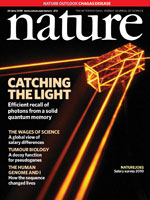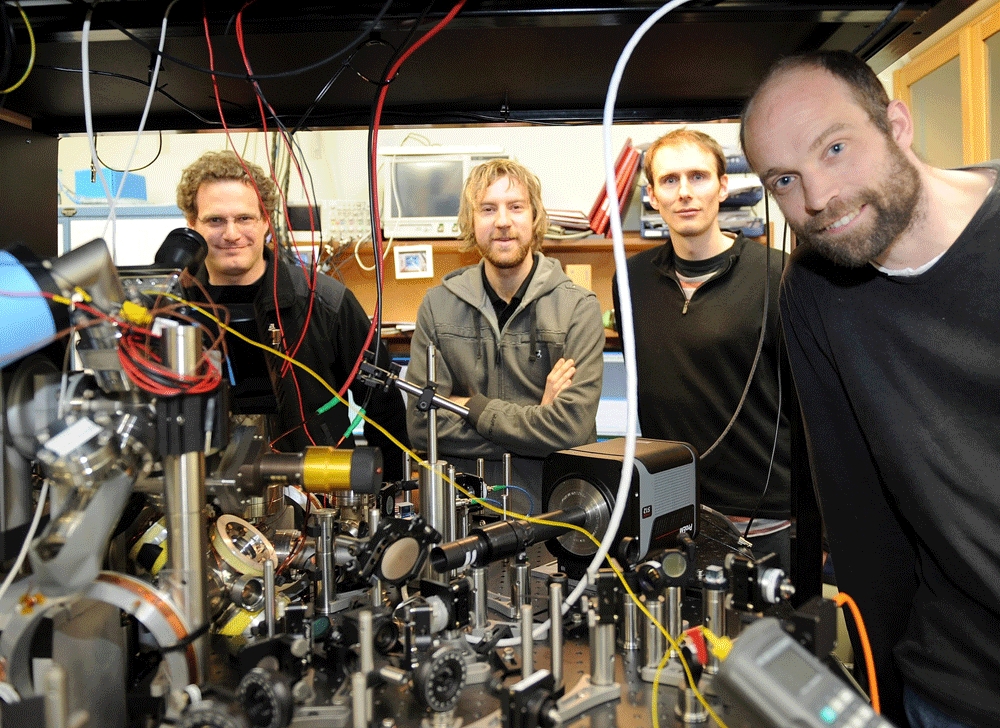News and Events


Littlest Haldron Collider
Dr Niels Kjaergaard and colleagues have pushed the frontiers of quantum technology by developing a steerable ‘optical tweezers’ unit that uses intense laser beams to precisely split minute clouds of ultracold atoms and to smash them together.
Researchers used the technology to split a single ultracold cloud of rubidium atoms sequentially into 32 daughter clouds, spreading them out over nearly half a centimetre.
“This sort of precise control of these atoms is like being able to pull a delicate snowflake into two clean halves with your bare hands. It’s quite remarkable that we are able to manipulate such minute and fragile samples while moving them such a comparatively large distance,” Dr Kjaergaard says.
FINESS-2013 Workshop This workshop was held in Queenstown, NZ from 16-20 February 2013, and covered the dynamics of superfluid and strongly interacting gases. The programme had a fanstistic list of leading researchers in the field including Nobel laureate Professor William Phillips, Professor Immanuel Bloch and Professor Peter Zoller.
Biophotonics research activites recognised by international community. Dr Igor Meglinski at the Jack Dodd Centre for Quantum Technology has been invited to be a Node Leader and to represent New Zealand in the Biophotonics4Life Worldwide Consortium (BP4L). Biophotonics is an emerging multidisciplinary research area, embracing all light-based technologies applied to the life sciences and medicine. The overall aim of the consortium is to translate the knowledge of research institutions into innovative products and services by means of a close collaboration between industry and clinical users. BP4L is comprised of Node Leaders who are at the forefront of Biophotonics research and represent the breadth of the discipline. BP4L connects nodes of biophotonics researchers, educators, organizations, companies, and other enthusiasts to better harness global talent and resources and focus them on the most important end-user needs.
Congratulations to Dr Ashton Bradley for being awarded a Rutherford Fellowship. The project Ashton will be working on is "The Birth, Life, and Death of a Quantum Vortex Dipole"Otago Scientists make quantum leap in capturing atom. University of Otago Physicists are the first in the world to consistently isolate and capture a single atom - and the first to take its photograph. Their discovery has defied accepted science and might help turn the building blocks of life into ultrafast quantum-logic computers, which are still being developed. Mikkel Andersen, Tzahi Grunszweig, Andrew Hilliard and Matt McGovern started work on the project three years ago. More information can be found at Nature and the Otago Daily Times
Jevon Longdell Captures the limelight: Otago Physicist, Jevon Longdell, together with members of an Australian national University-led team, made the cover of this week's Nature (24th June) with a paper describing their work creating the world's most efficient quantum memory for light - an essential step toward the development of a quantum computer. Jevon is a lecturer in physics and a member of the Jack Dodd Centre for Quantum Technology. More information can be found at Nature and the Otago Daily Times.



